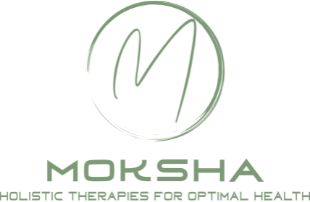Embracing Non-Traditional Physical Therapy to Improve Movement
Physical therapy is more than just exercise routines and rehabilitation equipment. While traditional techniques like strength training and mobility exercises are essential, non-traditional approaches can offer a more holistic path to healing. By incorporating alternative methods like Dry Needling, Graston’s Technique, and Myofascial Release, physical therapy can support not only movement recovery but also overall well-being. In this article, we explore how these non-traditional therapies can help you regain strength, improve mobility, and enhance your quality of life—all through a natural and holistic approach.
DAte
Jan 30, 2025
Moving Beyond Traditional Therapy: Why It Matters
Many people associate physical therapy with stretches, resistance bands, and guided exercise. While these methods are effective, they may not address every patient’s unique needs. Non-traditional treatments offer additional benefits, including:
Reducing inflammation and pain naturally
Improving circulation and oxygen flow
Supporting the mind-body connection for deeper healing
Lowering dependence on medication
Enhancing overall recovery speed
By embracing both traditional and holistic methods, physical therapists create personalized treatment plans that focus on long-term healing rather than just symptom relief.
Dry Needling: Targeting Pain for Deep Relief
What is Dry Needling?
Unlike acupuncture, which focuses on energy flow, dry needling involves inserting thin needles into trigger points—specific areas of muscle tightness or pain. This technique encourages muscle relaxation and pain relief.
How Dry Needling Supports Holistic Healing:
Relieves chronic pain and muscle tightness
Improves mobility by relaxing deep tissues
Reduces tension headaches and migraines
Supports natural pain relief without medication
Although the name may sound intimidating, dry needling is often painless and offers lasting relief for conditions like fibromyalgia, sports injuries, and post-surgical stiffness.
Graston’s Technique: Precision in Soft Tissue Therapy
What is Graston’s Technique?
Graston’s Technique is a specialized form of instrument-assisted soft tissue mobilization (IASTM). It uses stainless steel tools to detect and treat areas of soft tissue restriction, promoting faster healing and improved mobility.
Benefits of Graston’s Technique:
Breaks down scar tissue and adhesions
Reduces inflammation and enhances blood flow
Restores mobility in injured or overused muscles
Helps with chronic pain conditions like tendonitis and plantar fasciitis
This technique is particularly beneficial for athletes and individuals recovering from repetitive strain injuries.
Myofascial Release: Relieving Tension for Better Movement
What is Myofascial Release?
Myofascial Release is a hands-on technique that targets the fascia—the connective tissue surrounding muscles and organs. By applying gentle, sustained pressure, therapists help release tightness and improve mobility.
How Myofascial Release Enhances Recovery:
Relieves chronic pain and tension
Improves posture and flexibility
Reduces stress and promotes relaxation
Aids in recovery from conditions like fibromyalgia and TMJ disorders
This technique is widely used to address both physical and emotional tension stored in the body.
The Mind-Body Connection in Physical Therapy
Healing is not just physical—it’s emotional and mental as well. Stress and anxiety can contribute to chronic pain and muscle tension. Holistic therapy incorporates:
Mindfulness and deep breathing exercises to reduce tension
Guided movement therapies like yoga or Tai Chi
Meditation practices to enhance recovery
By integrating these techniques into physical therapy, patients experience more than just pain relief—they achieve whole-body wellness.
Natural Pain Relief vs. Medication: A Wellness-Focused Choice
Many people seek alternatives to pain medication due to side effects and long-term risks. Non-traditional therapies offer a natural way to manage pain while addressing the root cause of discomfort.
Key Benefits of Non-Traditional Pain Relief:
Fewer side effects compared to medication
Supports long-term healing rather than temporary relief
Helps patients regain control over their health naturally
Nutrition’s Role in Recovery and Movement
How Diet Supports Healing:
Anti-inflammatory foods like turmeric and leafy greens can reduce swelling
Hydration is essential for muscle recovery
Protein-rich meals help repair tissues and build strength
Eating well complements physical therapy, enhancing recovery and overall energy levels.
Lifestyle Modifications for Long-Term Mobility
Improving mobility isn’t just about therapy sessions—it’s about daily habits. Simple changes can prevent future injuries and maintain flexibility:
Stretching daily to keep muscles limber
Using ergonomic furniture to reduce strain
Practicing mindful movement to avoid repetitive stress injuries
A well-rounded lifestyle approach leads to lasting improvements in movement and pain management.
Choosing the Right Physical Therapist for Holistic Care
When looking for a therapist who embraces non-traditional techniques, consider:
Their experience with alternative therapies
Their approach to personalized care
Whether they incorporate holistic wellness principles
A good therapist will take the time to understand your needs and create a treatment plan that aligns with your wellness goals.
Final Thoughts: Embracing a Holistic Approach to Movement
Healing is not just about eliminating pain—it’s about restoring balance to the body and mind. By integrating non-traditional techniques like Dry Needling, Graston’s Technique, and Myofascial Release, along with mindfulness and nutrition, physical therapy becomes more than just recovery—it becomes a path to lifelong wellness.
If you’re ready to explore a holistic approach to movement, consult with a physical therapist who embraces both traditional and alternative healing methods. Your body will thank you for it!
FAQs
1. Is Dry Needling painful?
Dry needling is usually painless, but some patients may experience a mild twitch response when the needle targets a tight muscle.
2. How does Graston’s Technique differ from a regular massage?
Graston’s Technique uses stainless steel tools to break down scar tissue, whereas traditional massage relies solely on hands for muscle manipulation.
3. Can Myofascial Release help with stress relief?
Yes! Myofascial Release not only improves physical mobility but also reduces stress by promoting deep relaxation.
4. How do I find a physical therapist who offers these techniques?
Every patient has different needs and goals, so let our trained staff evaluate your situation and decide whether these techniques can work better for you than more traditional approaches.
Share



